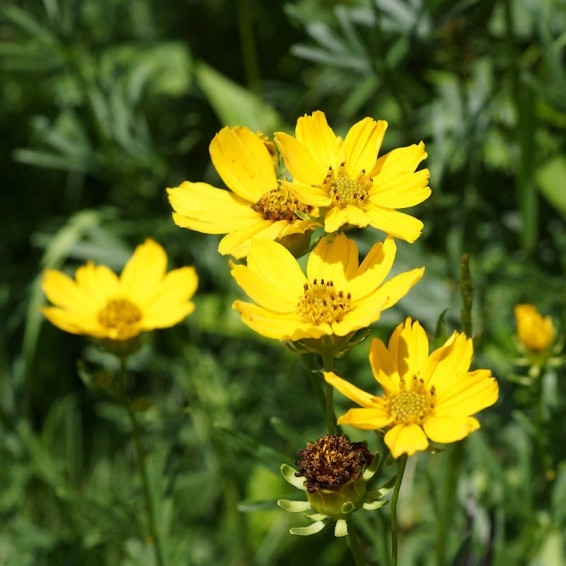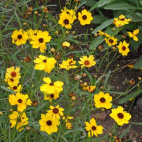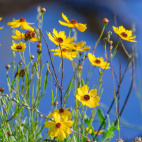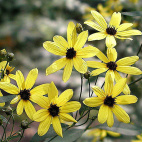Prairie Coreopsis Seeds
- HOW TO GROW
- FAST FACTS
- REVIEWS
HOW TO GROW
Sowing: Direct sow in late fall, planting the seed just below the surface of the soil; these Prairie Coreopsis seeds need light to germinate. For spring planting, mix the seed with moist sand and store it in the refrigerator for 30 days before direct sowing. Keep the soil evenly moist until germination, which should occur within 10-15 days. The treated seeds can also be started indoors 6-8 weeks before the last frost of spring; plant the Coreopsis Palmata seeds on the surface of a flat, keeping the moisture consistent and the temperature around 65 degrees F. Transplant seedlings.
Growing: This plant adapts to nearly any soil, including rocky or shallow areas; it makes a good choice for borders, roadsides, or prairie plantings. Water the seedlings occasionally until they become established; mature plants prefer dry soil and tolerate drought, heat, and humidity well. If given too much moisture or rich soil, the plants tend to flop and may need support. If the blooming decreases midseason, cut the plant back by half for new growth and blooms. Regular deadheading also helps prolong the season of blooming. It will self-seed as well as spreading by rhizomes, though it does not become weedy. For the healthiest growth, divide plants in the spring or fall after several years of growth. This plant attracts butterflies and bees as well as resisting rabbits and deer.
Harvesting: For long lasting fresh flowers, cut the stems long and place them in water immediately.
Seed Saving: Several weeks after the flowers have faded, the 1/4" seed heads will turn dry and dark brown. Since these Prairie Coreopsis seeds are a favorite food of songbirds and rodents, harvest them promptly. Cut the heads from the plant and spread them out to dry completely. Break them apart to remove the seeds, and separate the seeds from the chaff. Store Coreopsis Palmata seeds in a cool, dry place.
FAST FACTS
Common Names: Prairie Tickseed, Stiff Coreopsis, Stiff Tickseed
Latin Name: Coreopsis palmata
Species Origin: US Native Wildflower
Type: Native Wildflowers
Life Cycle: Perennial
USDA Zones: 3, 4, 5, 6, 7, 8
US Regions: Midwest, Southeast
Seeds per Ounce: 10,900
Stratification: Cold/Wet for 8 Weeks
Germination Ease: Stratify 8 Weeks
Sunlight: Full Sun, Part Sun
Height: 24 Inches
Color: Yellow
Bloom Season: Blooms Early Summer, Blooms Late Summer
Uses: Attracts Pollinators, Attracts Butterflies, Cut Flowers, Deer Resistant
Best seeds
This is a review for all your seeds: You have the best seeds. High quality and an amazing selection. The only thing I don't like is the extra strong mylar pack. I would rather receive seeds in a simple paper pack. Thank You.
I'm glad you were pleased with the seeds. We use a mylar resealable packet so that the seeds you purchase can be stored for years!
small seed packaging
It'll be a long wait until they get planted, but I appreciate your foil packaging of small seed packets and the detailed planting guidance printed on each --particularly for seed stratification
DESCRIPTION
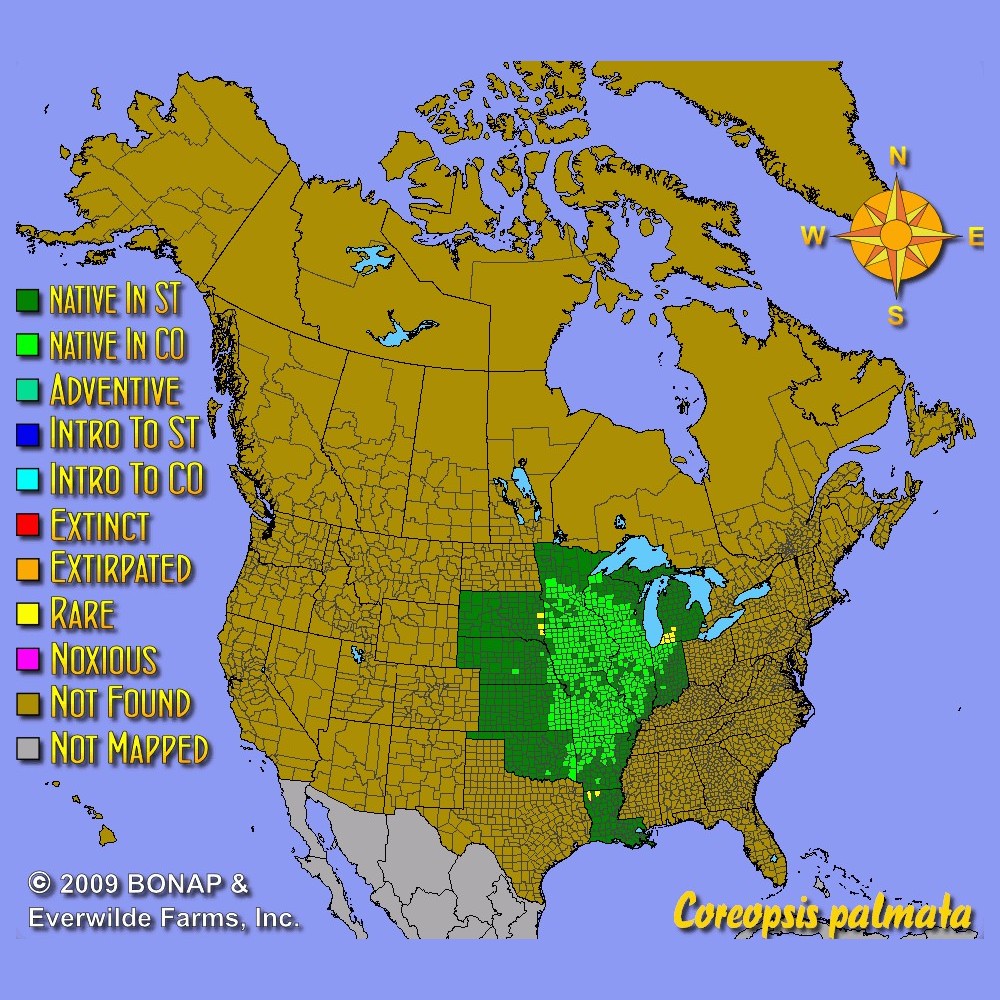
HOW TO GROW
Sowing: Direct sow in late fall, planting the seed just below the surface of the soil; these Prairie Coreopsis seeds need light to germinate. For spring planting, mix the seed with moist sand and store it in the refrigerator for 30 days before direct sowing. Keep the soil evenly moist until germination, which should occur within 10-15 days. The treated seeds can also be started indoors 6-8 weeks before the last frost of spring; plant the Coreopsis Palmata seeds on the surface of a flat, keeping the moisture consistent and the temperature around 65 degrees F. Transplant seedlings.
Growing: This plant adapts to nearly any soil, including rocky or shallow areas; it makes a good choice for borders, roadsides, or prairie plantings. Water the seedlings occasionally until they become established; mature plants prefer dry soil and tolerate drought, heat, and humidity well. If given too much moisture or rich soil, the plants tend to flop and may need support. If the blooming decreases midseason, cut the plant back by half for new growth and blooms. Regular deadheading also helps prolong the season of blooming. It will self-seed as well as spreading by rhizomes, though it does not become weedy. For the healthiest growth, divide plants in the spring or fall after several years of growth. This plant attracts butterflies and bees as well as resisting rabbits and deer.
Harvesting: For long lasting fresh flowers, cut the stems long and place them in water immediately.
Seed Saving: Several weeks after the flowers have faded, the 1/4" seed heads will turn dry and dark brown. Since these Prairie Coreopsis seeds are a favorite food of songbirds and rodents, harvest them promptly. Cut the heads from the plant and spread them out to dry completely. Break them apart to remove the seeds, and separate the seeds from the chaff. Store Coreopsis Palmata seeds in a cool, dry place.
FAST FACTS
Common Names: Prairie Tickseed, Stiff Coreopsis, Stiff Tickseed
Latin Name: Coreopsis palmata
Species Origin: US Native Wildflower
Type: Native Wildflowers
Life Cycle: Perennial
USDA Zones: 3, 4, 5, 6, 7, 8
US Regions: Midwest, Southeast
Seeds per Ounce: 10,900
Stratification: Cold/Wet for 8 Weeks
Germination Ease: Stratify 8 Weeks
Sunlight: Full Sun, Part Sun
Height: 24 Inches
Color: Yellow
Bloom Season: Blooms Early Summer, Blooms Late Summer
Uses: Attracts Pollinators, Attracts Butterflies, Cut Flowers, Deer Resistant
Reviews
Review
Best seeds
This is a review for all your seeds: You have the best seeds. High quality and an amazing selection. The only thing I don't like is the extra strong mylar pack. I would rather receive seeds in a simple paper pack. Thank You.
I'm glad you were pleased with the seeds. We use a mylar resealable packet so that the seeds you purchase can be stored for years!
Review
small seed packaging
It'll be a long wait until they get planted, but I appreciate your foil packaging of small seed packets and the detailed planting guidance printed on each --particularly for seed stratification
Also Consider These:
-
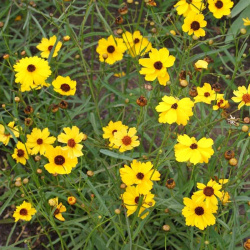 Leavenworth's Tickseed Seeds
Coreopsis leavenworthii
This radiant, yellow wildflower is native to Florida but will grow as an annual in colder areas as well. This wildflower is an easy-to-grow plant that flowers in short order.Quick View$3.48 Pkt - $12.65 / Oz
Leavenworth's Tickseed Seeds
Coreopsis leavenworthii
This radiant, yellow wildflower is native to Florida but will grow as an annual in colder areas as well. This wildflower is an easy-to-grow plant that flowers in short order.Quick View$3.48 Pkt - $12.65 / Oz -
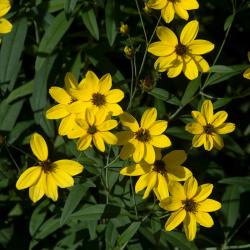 Tall Coreopsis Seeds
Coreopsis tripteris
The flower of this species is similar to other Coreopsis varieties, but these bright yellow flowers always come out on top because they are very tall. This trait makes it a fine choice for a tall-grass prairie restoration.Quick Viewx
Tall Coreopsis Seeds
Coreopsis tripteris
The flower of this species is similar to other Coreopsis varieties, but these bright yellow flowers always come out on top because they are very tall. This trait makes it a fine choice for a tall-grass prairie restoration.Quick ViewxTall Coreopsis Seeds
Coreopsis tripteris
The flower of this species is similar to other Coreopsis varieties, but these bright yellow flowers always come out on top because they are very tall. This trait makes it a fine choice for a tall-grass prairie restoration.
$3.48 Pkt - $38.00 / Oz




